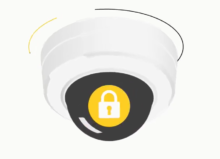STORAGE FOR VIDEO BUSINESS SYSTEMS

When you need to provide evidence for an incident or use your recordings for video analytics, the last thing you want to see is an error message from the storage subsystem. Storage is not only a matter of capacity; it is also a question of quality and design. Enterprise-grade surveillance solutions with sophisticated and intelligent functionality such as motion detection, real-time access to recordings and instant alerts to extraordinary events need to have storage systems that meet the highest demands as video safety and business solutions are becoming more and more essential in our world.
Christian Ringler, Milestone Director Middle East, Africa and Dach explains one of the most important components of a surveillance solution: the storage of video recordings and how to ensure that they are retrievable and fit for purpose.
You can’t simply grab a few disks Video surveillance data differs from other business data because it is streamed in real-time and multiple streams are stored in parallel. To put the scale of this into context, consider a surveillance installation with 700 cameras, where video recordings have to be legally kept for three months. The system could easily generate 6 Terabytes of video recordings per day, which would equate to 550 Terabytes of video data over a three-month period (based on the assumption that 200 cameras run HD H.264, and 500 cameras run 4CIF JPEG with 5 frames per second, and with an average motion/recording rate of 15%). Storing video recordings is very different from storing data in an ERP system. You can’t simply grab a few disks and put them in a cabinet. This is because video from all cameras has to be written at the same time. The video files are mission-critical to the company and storage failure could result in important evidence being lost. Storage for a video management system has to be designed with these issues in mind.
Get to grips with storage requirements
There are a multitude of storage solutions out there. Before you buy one, it is important to understand the nature of the surveillance system, the scale of the data output, how and why it will need to be retrieved. Consider what type of cameras are in use. Are they Analog or IP? How many? Is the number likely to increase? What is the purpose of the video being recorded? In terms of quality, is it high-resolution designed for evidentiary purposes? Is it continuous recording or on motion-detection? The higher the resolution of the recordings and the more recordings captured, the faster storage capacity will run out. There are ways to overcome this, including data compression and establishing settings to ‘overwrite’ the oldest recordings once the storage solution has reached its full capacity. However, there are inevitably compromises with both these techniques: you risk ending up with either lower quality, inadmissible recordings – or no recordings at all. We work with the best storage vendors in the world. When it comes to storing video there should be no compromise. The whole point of storing recordings is to be able to retrieve it easily, quickly, and in a format that is easy to use. Of course, cost is a significant parameter that will also influence the type of implemented solution you choose.
Realize how the changing role of surveillance impacts storage needs
There was a time when surveillance was only designed for security. Now, more and more organizations are using video for marketing information. This, coupled with the Internet of Things (IoT), means it is critical that storage solutions are cost-effective, efficient, available and delivered to the right places. There are a variety of solutions available to organizations. The important thing is to deliver a solution that considers all customer assets.
http://ae.ingrammicro.com/ae/media/Review-Magazines/Review_Magazine_Oct2018.pdf
























































